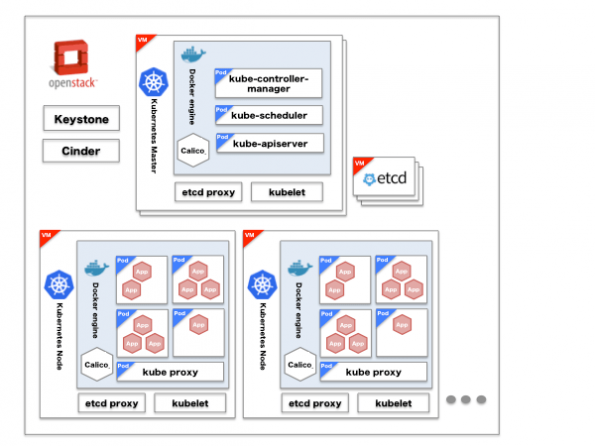If you combine Linux, OpenStack, and Kubernetes, you get the most awesome Infrastructure-as-a-Service cloud: LOKI.
In 2022, we can safely say that Kubernetes is one of the most used container orchestration technologies. The platform is hugely popular because it offers the ability to resolve problems and offers an out-of-the-box way of thinking about deploying, managing, and scheduling the applications. Many of you also work with private cloud deployments like OpenStack and I think that we can also safely say that this is the open source standard for private cloud computing. What started with a couple dozen contributors quickly grew into a group of 8,000 contributors who have built the software and a vibrant, global community powering more than 25 million cores of compute.
These two giants in open source technology can be a great combination since both the technologies are complementary to each other. They both solve problems that are similar in nature but on different layers of the stack, so combining Kubernetes and OpenStack gives users more scalability and automation than ever before.
With the collaboration of Kubernetes and OpenStack, a wide array of benefits can be reaped. Kubernetes’s features, flexibility, and scalability makes the combination an efficient solution for managing OpenStack. Whereas, incorporating Kubernetes into OpenStack will let Kubernetes users access a much robust framework for deploying and managing applications. The perfect combination of virtualization, orchestration, containers, and open infrastructure cloud technology, while keeping your competitive advantages and freedom of running open source technology.
Some users are running their LOKI architecture in this way:

Below you can find some more concrete benefits of combining the two technologies:
- Faster development of better apps: With the growing interest shown by users to use OpenStack in combination with Kubernetes, it is immensely popular as it offers on-demand, access-anytime services. It also offers the capability of increased application portability, to reduce development time, allowing the apps to be more componentized and highly distributed.
- Improved OpenStack lifecycle management: With the world moving towards cloud-native infrastructure and application patterns, it’s a perfect time for OpenStack to implement this as well. Kubernetes and cloud-native patterns will improve OpenStack lifecycle management by enabling rolling updates, versioning, and carrying deployments of new innovative components and features.
- Great infrastructure in OpenStack: Kubernetes offers self-healing infrastructure. Thus, when Kubernetes is adopted as key components of the stack, it makes OpenStack easier to manage and more resilient to the failure of core services and individual compute nodes.
- Easier management: Kubernetes cluster orchestration makes OpenStack easier to deploy and to manage smoothly. OpenStack is composed of several stateless applications that communicate to provide services, that is a familiar model in the world of micro-services that Kubernetes and containers call home.
- Higher level of security: The most common concern cited in hesitation to adopt container technology is security. OpenStack offers a higher level of security when it is run alongside Kubernetes as users can use a bay in OpenStack to arrange a group of virtual machines or bare metal instances so that they are used by a single authorized user. OpenStack also supports the verification of trusted container content through integration with tools for image signing, scanning, and certification.
- Rapid evolution: As both Kubernetes and OpenStack are widely used by giants in the technology world such as Google, Amazon, or eBay, this makes both the technologies innovate at a faster pace to resolve all sorts of unique challenges. Thus, evolving both the technologies to integrate with one and another to enable an enterprise-grade infrastructure and application platform.
- Standardization: For OpenStack to work along with Kubernetes, it has to embrace the container standards; this makes open standards for container technology more universal. Inevitably making it easier for organizations to set up and deploy container technology on OpenStack infrastructure.
Combined, the LOKI stack is now seeing over 150,000 code changes every year. Additionally, it has been found that over 70% of OpenStack users are currently running Kubernetes in their environment. This level of combined innovation through open source contributions has its waves in every industry and brings forward the concept of decentralization.
Source: Naser.
- Benefits of running LOKI - February 24, 2022

)







